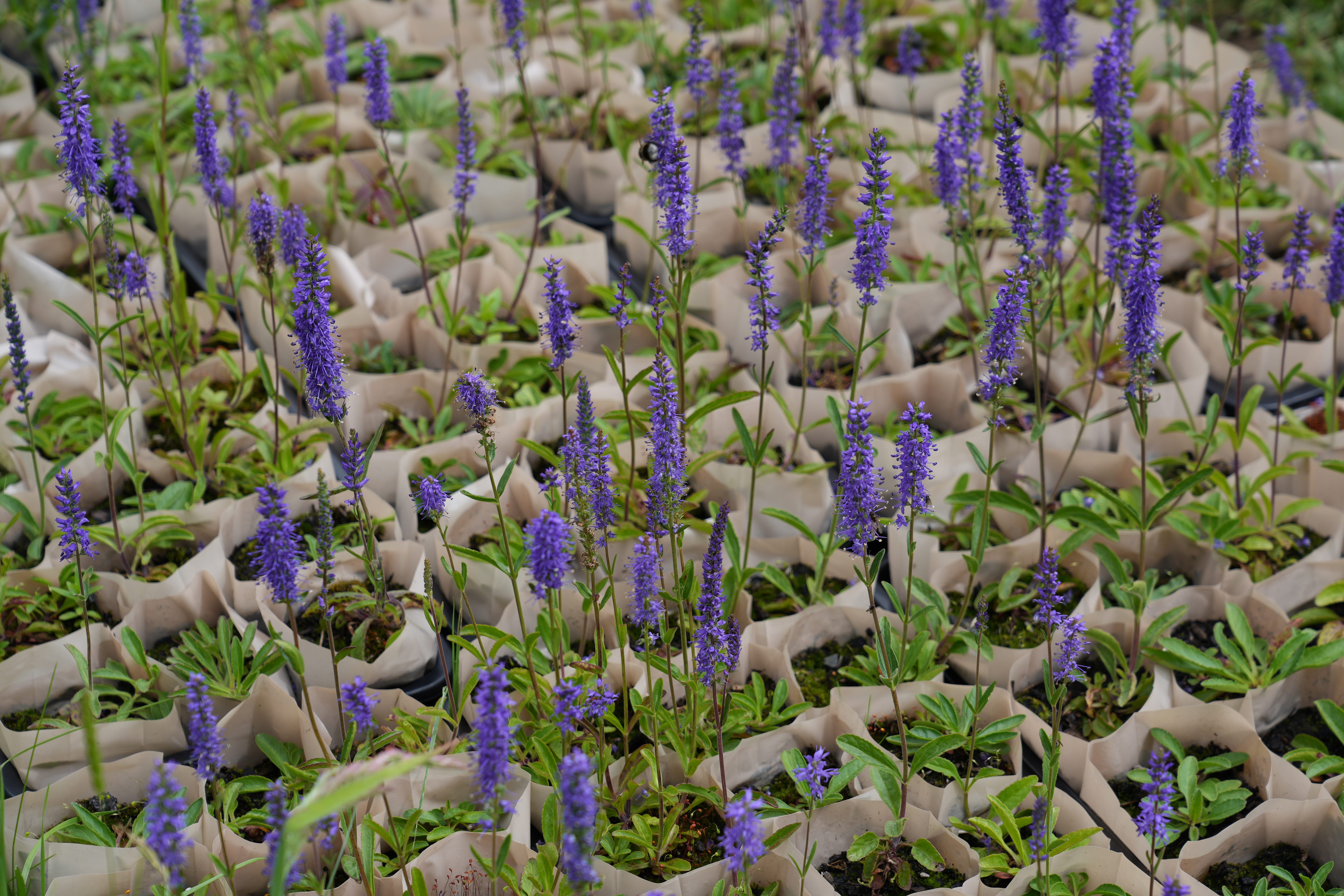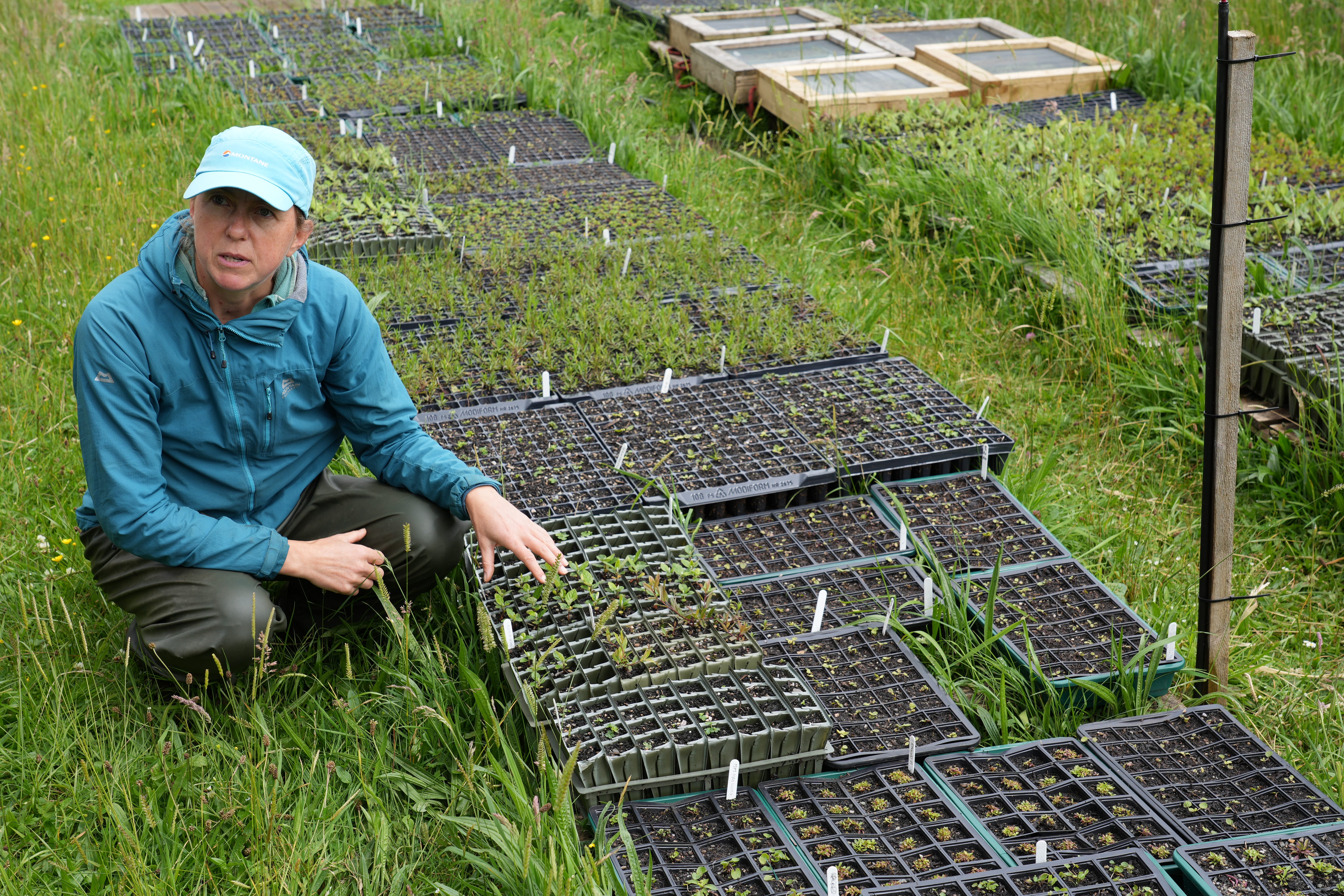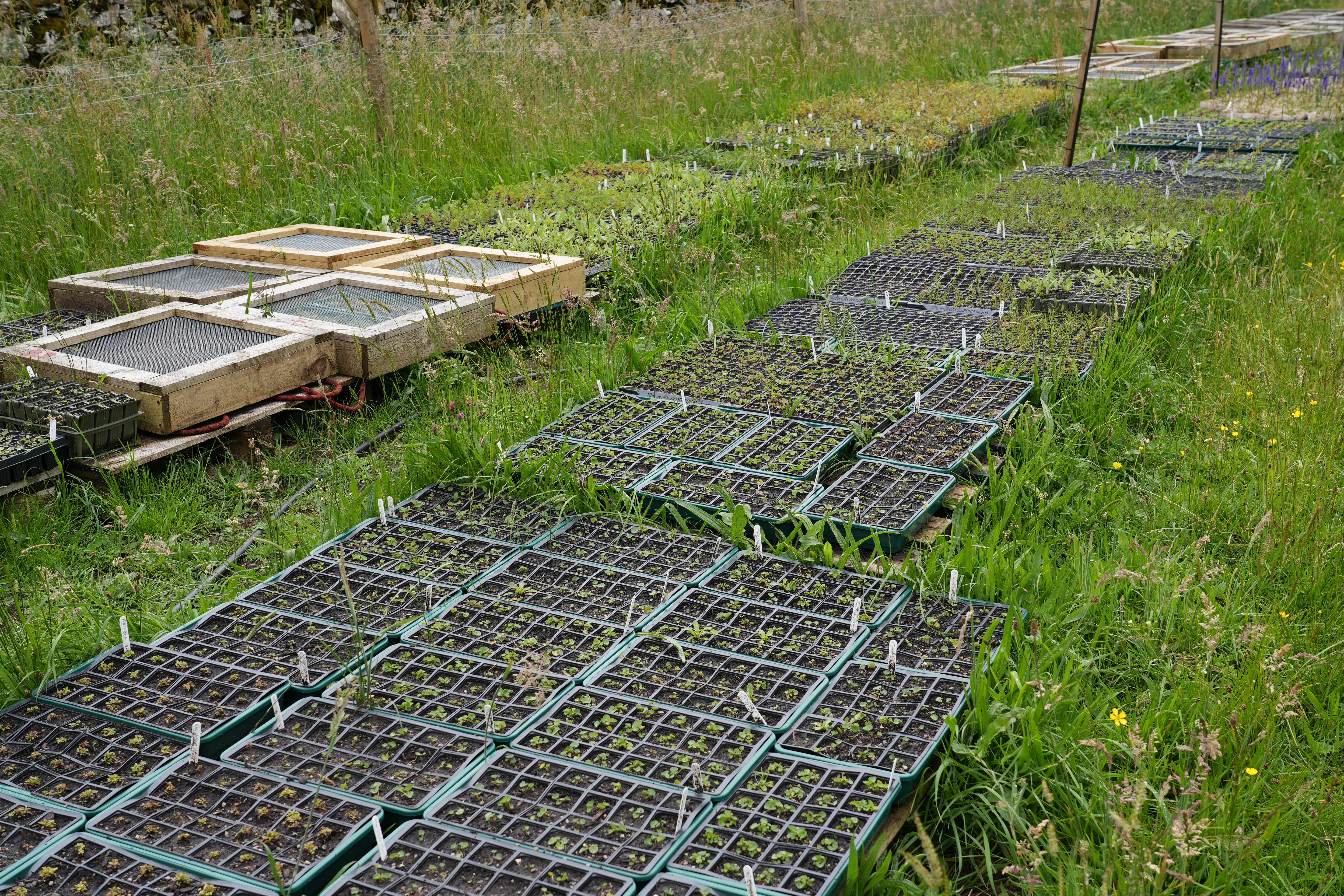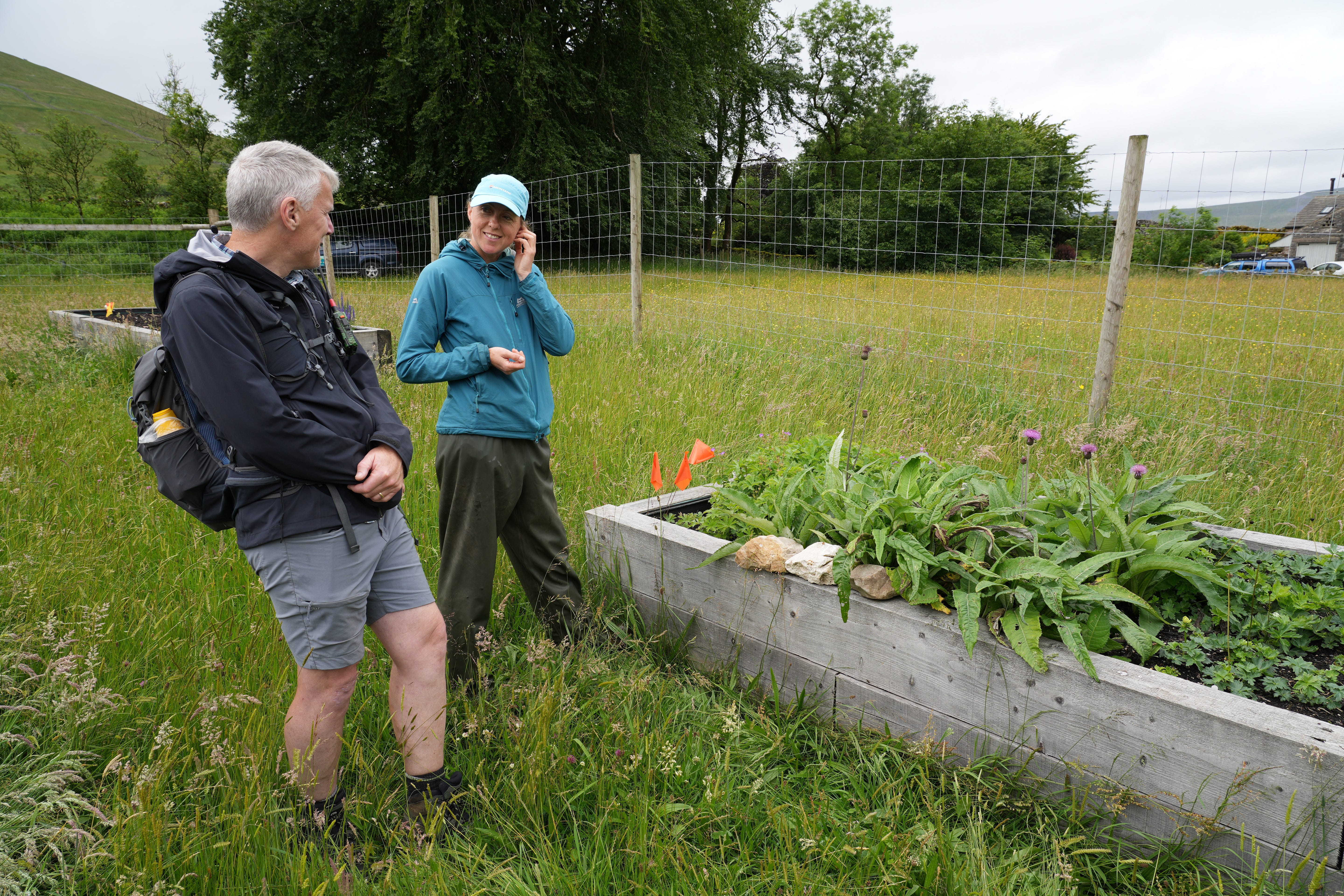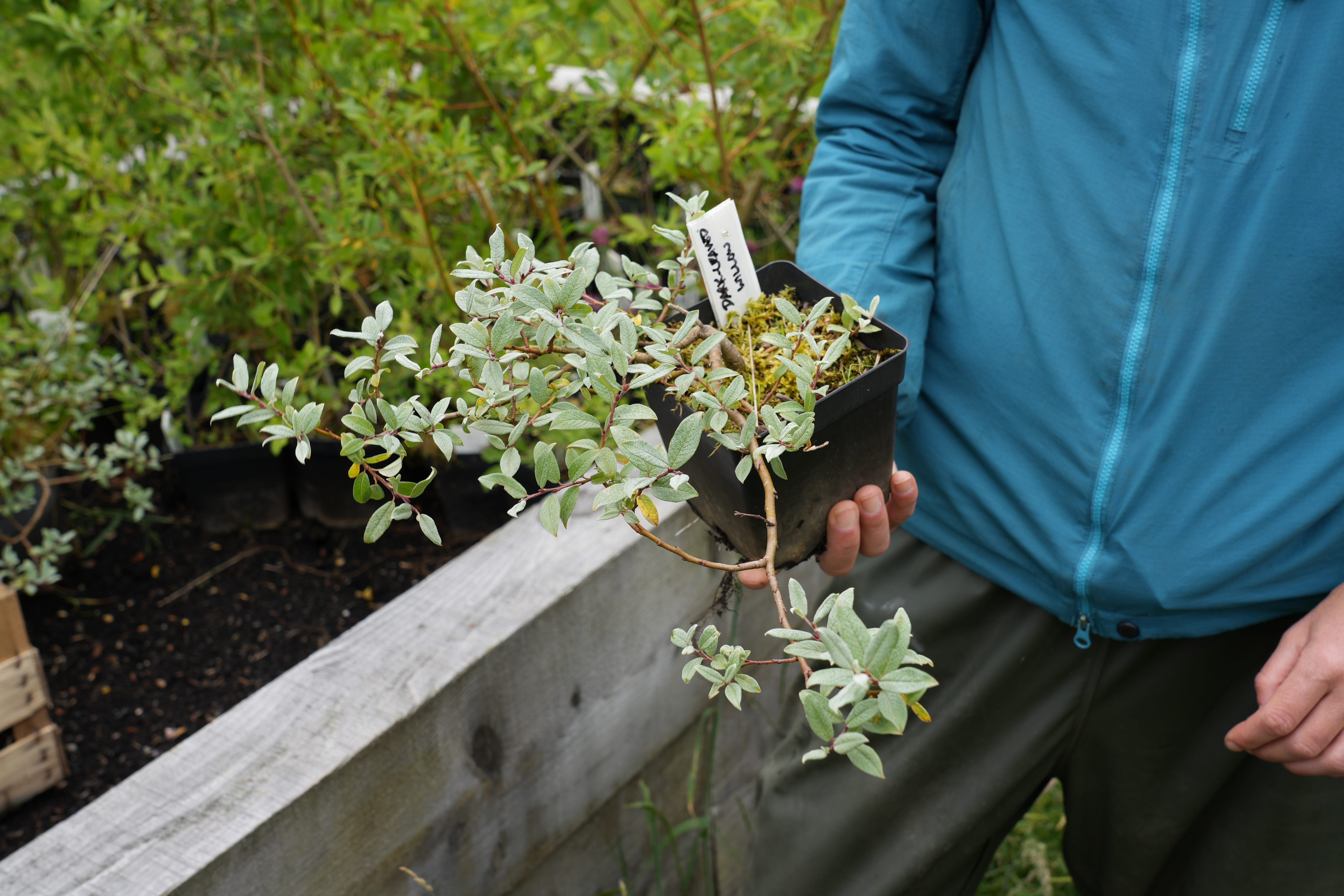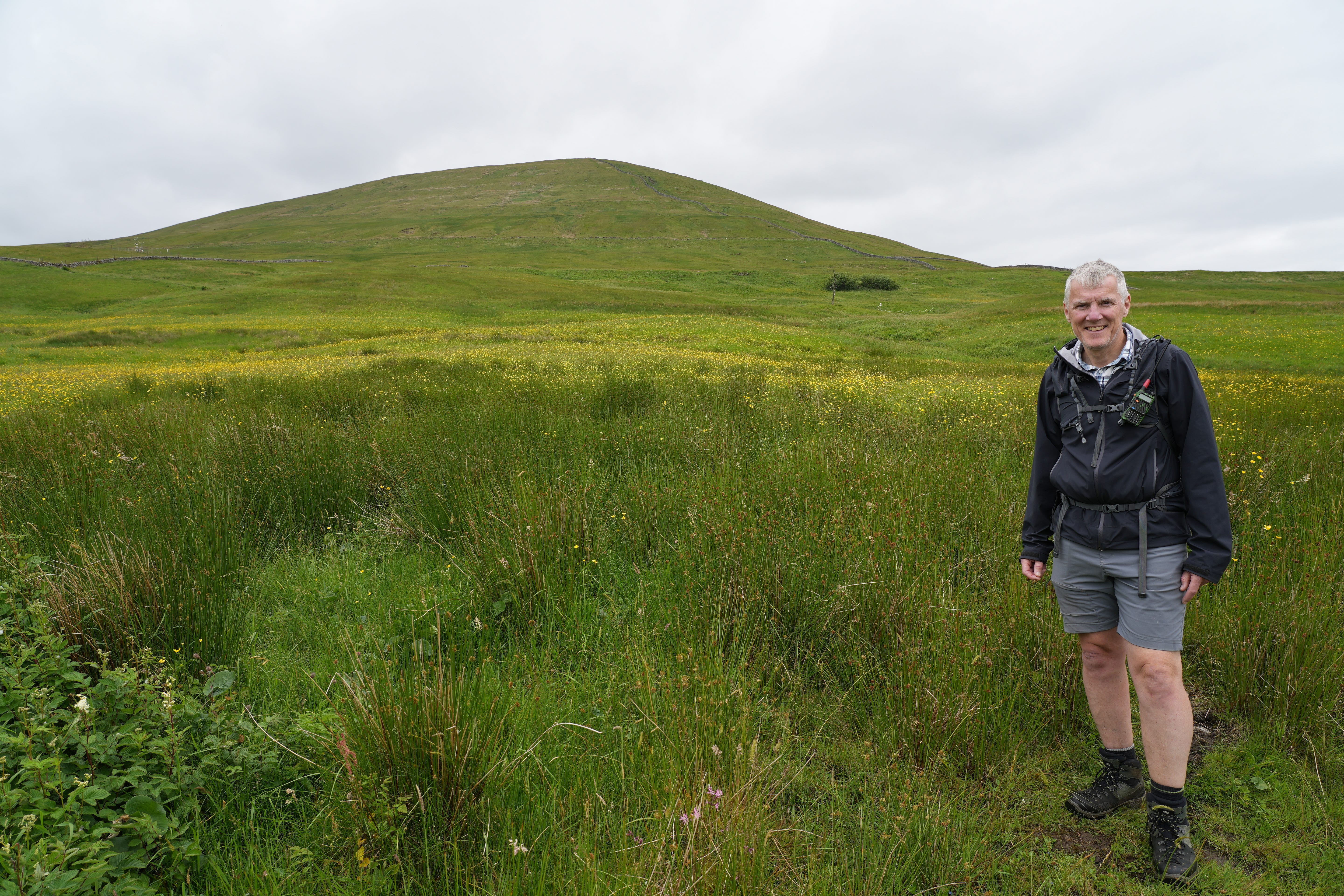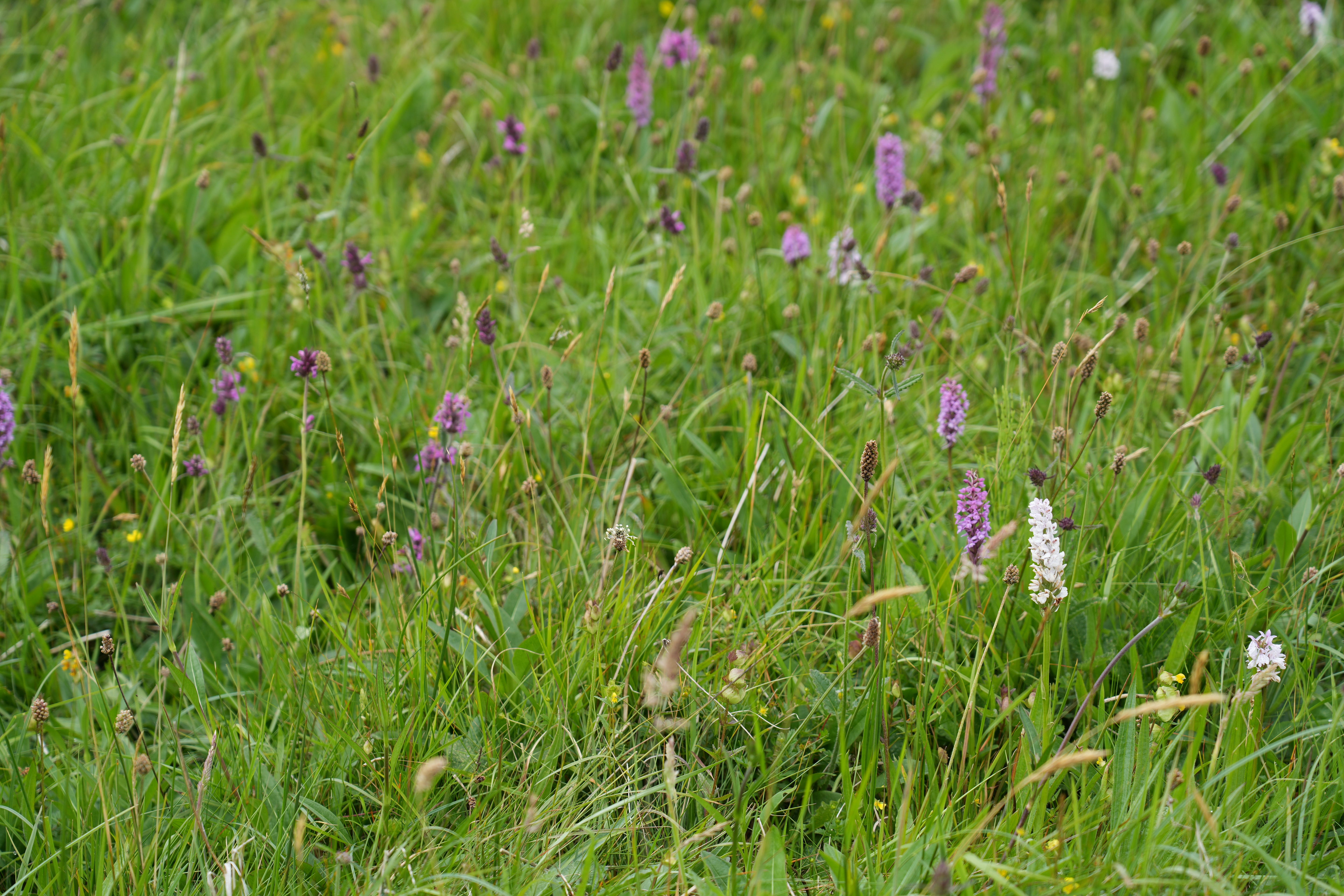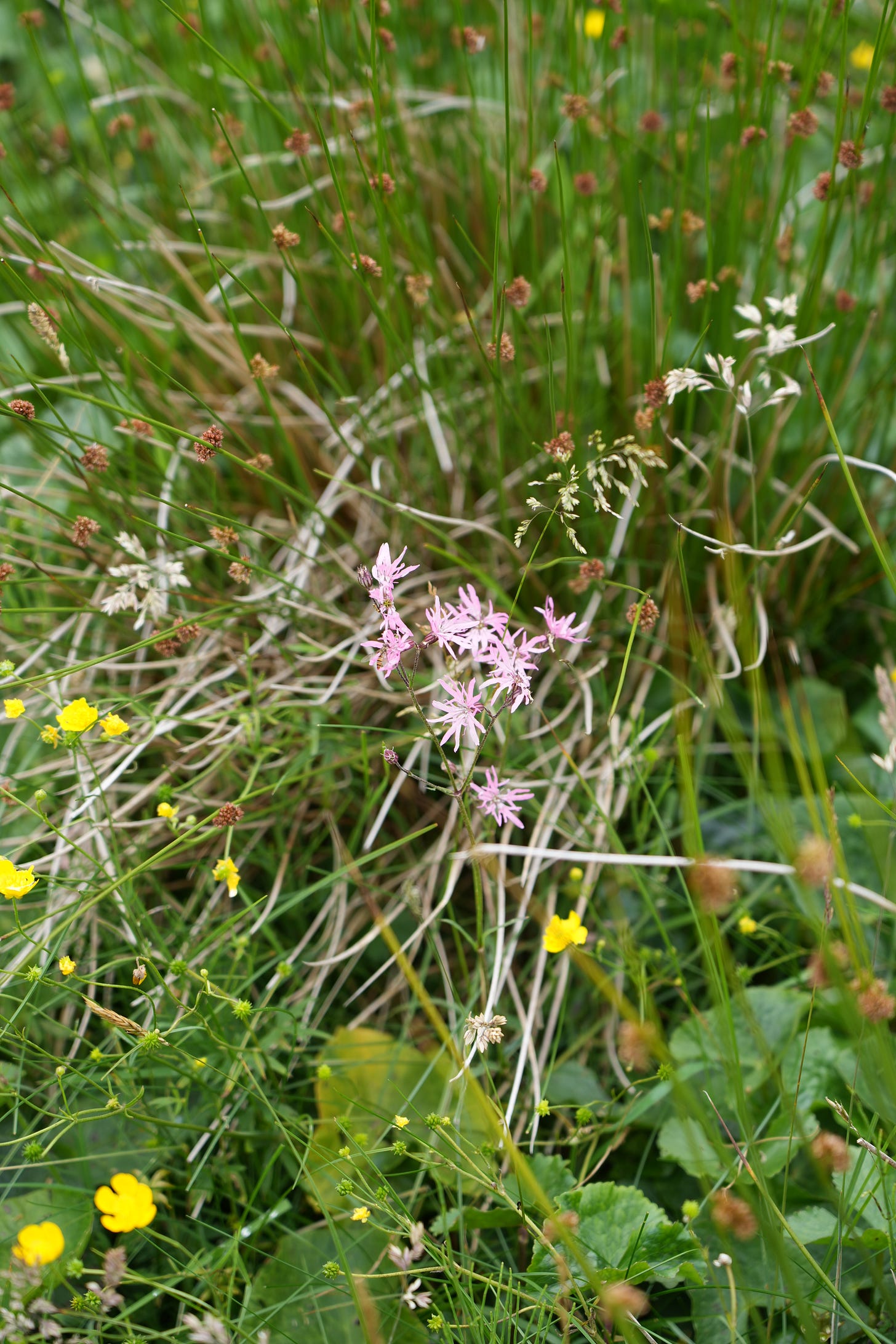Wild Ingleborough's upland plant nursery
Set within Yorkshire's stunning uplands, conservationists and volunteers help to restore a wild landscape
Wild Ingleborough is a landscape scale nature restoration project covering 1,300 hectares in North Yorkshire. It is a collaboration between Yorkshire Wildlife Trust, Natural England and other partners. All with an ambition to restore habitat around the area.
Liz Coates is the Wild Ingleborough Project Officer, with the big job of implementing this ambitious project’s aims and objectives. At the heart of this is a new nursery area (not open to the public) for raising some of the precious plant life that is under threat or decline across Ingleborough.
Set in the heart of the reserves, a small fenced area to keep deer and rabbits out, the nursery houses an expanding number of plug plants grown from seed collected sensitively across Ingleborough.
Volunteers help the team with tasks such as sowing seeds, planting into larger pots and general plant care. Helping grow thousands of plants.
As a nature lover and gardener, I was in heaven looking at all of these exciting and healthy wildflower seedlings. My mind racing to imagine what all of these young plants will grow into.
On my visit I was treated to an incredible display of Veronica spicata, spiked speedwell. A plant pushed to a limited number of isolated pockets on rocky outcrops away from the munching of livestock. It’s suspected they could be growing in these spots out of necessity, not out of preference.
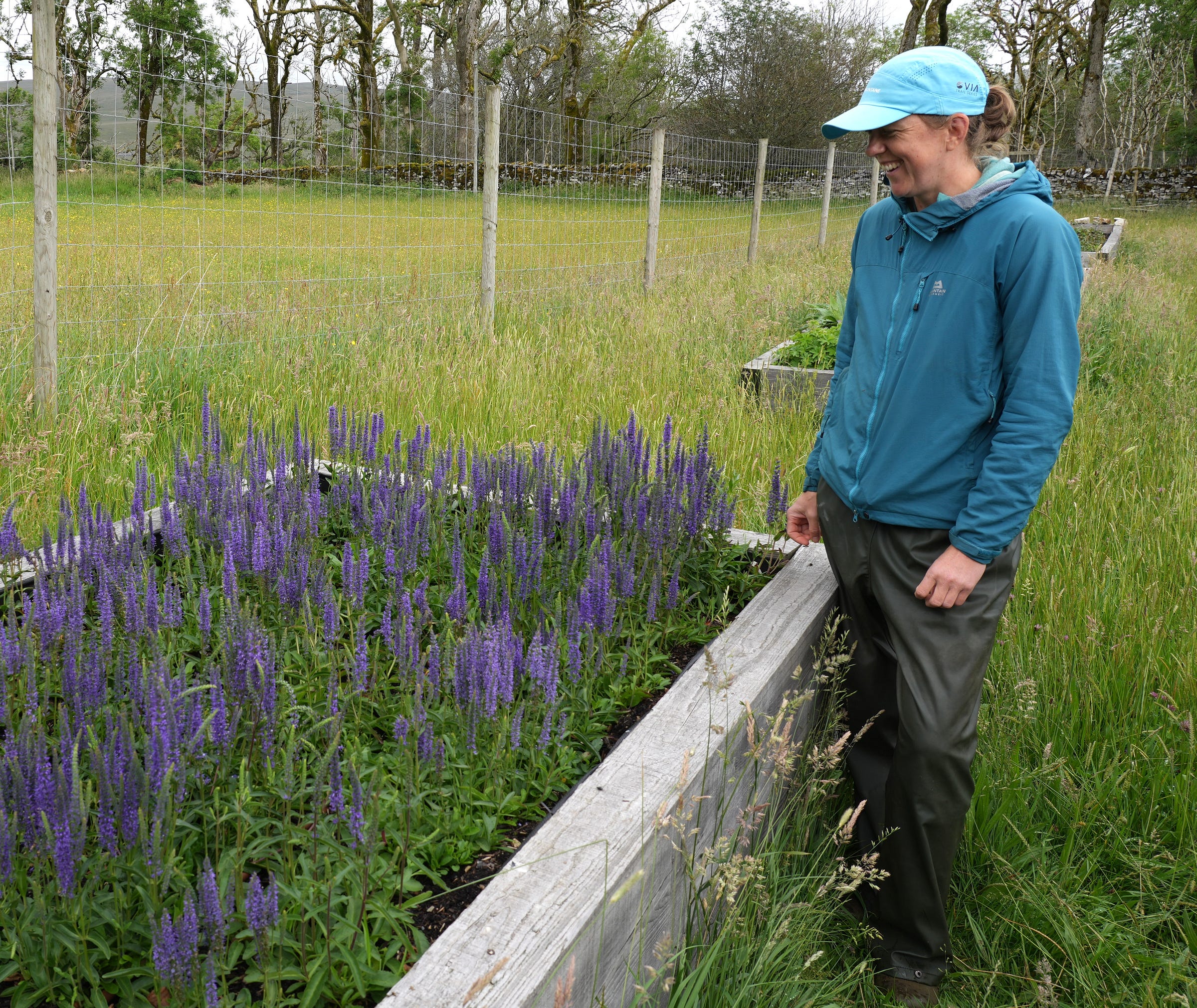
Liz and colleague Tim explained that they dream of seeing huge swathes of the beautiful blue spires across the landscape, among other wildflowers returned to their true numbers. They came up with the term ‘colourscaping.’ I joined them in imagining how wonderful that would be, to see the land returned to the rich and colourful biodiversity it would once have had.
Tim Thom is Wild Ingleborough’s programme manager, responsible for the development and implementation of the programme. Tim has been looking after the conservation of the area of Yorkshire for a large chunk of his life. Including working on the important peatland restoration projects nearby.
Some of the plants being propagated include shrubs and trees. The Yorkshire landscape over recent centuries has been almost entirely stripped of its scrub and woodland. People favouring cleared grassland for grazing sheep and cows. This significantly reduced the vibrant mix of habitat the area would once have had.
Propagating plants such as creeping willow, Salix repens, and dark-leaved willow, Salix myrsinifolia, allows the team to introduce important mixed habitat around the many vast meadows. These new habitats will provide shelter and nesting spots for many birds that should be able to breed in certain areas but currently can’t.
Tim took us on a tour of different meadows, pointing out the way plant community mixes vary between them. For a long time these meadows have been heavily grazed, preventing wildflowers from flowering and setting seed in quantities that would sustain their populations properly.
The Wild Ingleborough team changed the management routine to include a herd of 70 cows that roam and mob graze all of the meadows in this area.
Mob grazing is when herbivores are moved into a grassland in large numbers but for a short period of time, as would happen naturally in the wild.
This does two important things; first not all of the meadow is eaten, creating a patchwork of different heights in the sward for variety in micro habitats suitable for different species of plant and animal; second it gives the grassland much more time to recover and grow between grazing. Unlike modern intensive grazing with lots of livestock for a long period of time in the same field, giving plants much less or no time to grow properly in the summer months.
As we walked through different meadows, Tim explained that some had been managed differently intentionally as a research study to see which were the best methods to use more widely.
He explained they’ve found degraded meadows or pasture that have lost their diversity won’t naturally return to how they were - at least not in a reasonable timeframe - because grasslands don’t tend to retain a seed bank after so many years.
His tips for giving biodiversity a helping hand was to first get the management right, either by light or mob grazing as pasture or the summer hay cut as meadow. Importantly, he said it helps after the cut or grazing to ask another local landowner for fresh clippings from a diverse meadow nearby to spread. This will introduce seeds to the meadow or pasture in recovery.
My visit to Wild Ingleborough to see some of the land the team are restoring, in combination with the nursery as the engine room for growing plants, is incredibly exciting to me.
In a way, it’s taking what I love about landscape design - giving nature a helping hand, then letting it lead the way - and applying that to a nature restoration project on a huge scale.
It gives me hope and reassurance that a lot is happening to bring nature back, to see some land returned to what it should be and the wildlife that will return with it.
Personally I cannot wait to go back and see how some of the grassland, scrub and woodland restoration develops over the coming years and decades.
Please do take a look at the Wild Ingleborough project for yourself and if you can, donate to help fund the project.


